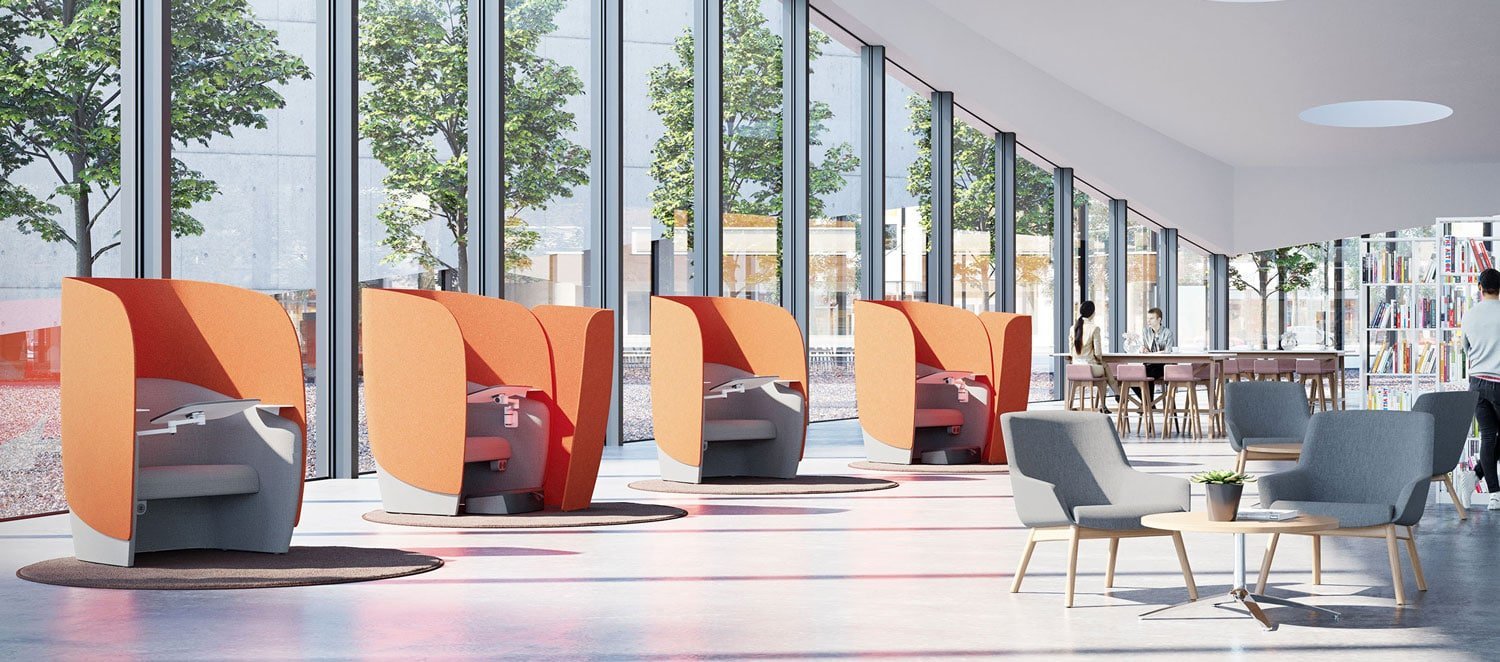How Open Plan Offices Affect Collaboration

How Open Plan Offices Affect Collaboration
Is your open plan office tanking your efforts of building a collaborative workspace?
The whole idea behind an open office plan is to bring people together, but often, the results are anything but.
You need only look around an open office space to see what’s really going on. People are working side-by-side, yes, but many of them take great pains to isolate themselves in their own worlds. Either they have headphones on, or they are ensconced in the furthest regions of the office itself, hiding behind the lone ficus tree in the corner.
While this may not always be the case, research seems to prove otherwise. One study, in particular, conducted by the Scandinavian Journal of Work Environment and Health, concluded that open office plans can lead to lower job satisfaction and may actually reduce collaboration.
The findings were overwhelmingly negative. More than 73 percent of respondents said they spent far less time on face-to-face interactions compared to what they did before they switched to an open office floor plan. Instant messaging was through the roof, too. It seems that most employees preferred to have conversations this way as opposed to making a phone call that everybody around them would be privy to. Yikes.
Shifting Gears: Making the Open Workspace More Collaborative
So, how do we address this? How do we meet employee needs for confidentiality and privacy within the open-concept design?
You don’t want your employees to lose the ability to interact. There’s a certain energy that teams need to maintain, and that can’t be done from behind multiple closed doors. However, you need to be realistic about their needs for separation, whether it’s for a few minutes, an hour, or for the day.
How the right collaborative office furniture can help
Creating dedicated zones in your open office space answer a range of needs. The collaborative office furniture you choose can be a big part of making it all work.
For example, you will need to include huddle spaces, small, separate areas for breakout groups that allow focus and concentration without having to leave the building. There are many styles of collaborative office furniture that support small groups or solo workers who need a little solace. Many can be equipped with data ports and power outlets as well, supporting their technology needs as they work together.

Adding informal lounge seating is another terrific idea. This allows your teams to move between environments easily and settle in wherever they feel comfortable.
Above all, flexibility is critical. Create a collaborative open floor plan that can be changed easily according to your needs. This will help you establish a work dynamic that can ebb and flow as business requires.
If you would like to learn more about how to make your open office space more collaborative, reach out today to set up a consultation. Our office interior designers have lots of great ideas that will help your business soar.
John Ofield is the owner of Collaborative Office Interiors. The leading provider of high-quality office furniture in Houston, Texas and surrounding areas. With more than 40 years of experience, he combines deep product knowledge with hands-on space-planning expertise to create ergonomic, productivity-focused work environments for businesses across Southeast Texas.

